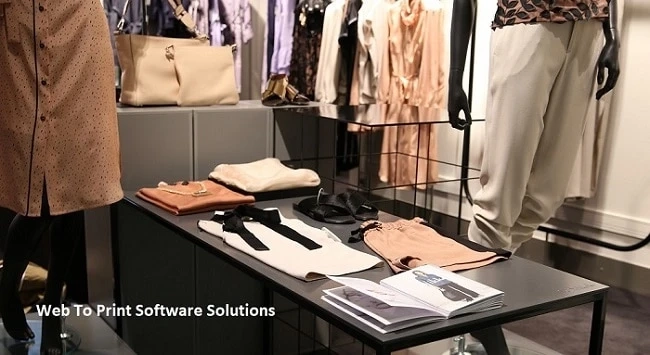Fashion and culture go hand-in-hand, and some believe that the retail and fashion industries may not always be as updated with technology as they are for the culture. However, in the past couple of years, as the fashion industry swiftly adopts recent technological innovations and explores new ways to connect with consumers, more fashion and luxury brands need to move to digital and 3d printing technology. This presents fashion with a massive opportunity for more than just digital transformation, but rather, real innovation. The web to print design software offers similar growth opportunities to fashion and accessory companies and helps them embark on the path of success. The tool allows them to gain a competitive advantage over their contemporaries and stand out from the crowd through its customization and digital solutions.
Web to Print Software Solutions Provide a Novel Path for Fashion Brands to Scale Up Production
3d printing technology in its digital format isn\'t new to fashion designers. Many high-end brands, such as Helmut Lang, Akris, Zac Posen and Valentino, have used this technology and added a new dimension to couture. These solutions enable designers to create collection lines more easily and also has a point of reference stored in technology. For instance, a series of dresses and tops in the Helmut Lang collection uses photographs shot by its designers Nicole and Michael Colovos, while some of them were taken from mobile phones or iPhones. The designers took photos of peeling paint subway walls that inspired them and then scanned the photographs into a computer. These scanned copies were used to make collages that may look nothing like the individual photos. One dress print based on a collage looks like X-rays of vertebrae. Another seems to be pebbles in a stream.
The new prints in the new form of representation may look nothing like something we are already accustomed to. Stripes, dots, or flowers repeated across the fabric are traditional designs; contemporary designs are more abstract as they give a feeling that one would have in a museum. Understandably, it is a 180-degree shift for designers to shun their age-old tradition of using paper and pencil. They now have to work on printing images and directly put them onto fabric. Until recently, the textile pattern that wasn\'t woven into fabric was commonly made with screen printing, but they were a more costly and labor-intensive process, and the mesh screens needed to be engraved by skilled artisans with designs that were to be printed. The work didn\'t end here; dyes were then squeegeed through the screens onto fabric one color at a time. A single order can take days or weeks.
Digital printing eases the whole process and lays down a whole image on fabric. The fashion industry has used the technique for ages to put photographs on t-shirts and shoppers\' bags. However, the technology did have its share of challenges as the inks tended to run, which led to the printing of edges fuzzily. However, as the technology has progressed, the ink used for printing is high quality and brands and designers don\'t have to worry about it causing any problem while designing the product. Inks and printers have improved tremendously to create more enduring and crisp looking prints.
Similarly, the web to print online designer, a customization solution, enables fashion and accessory brands to implement the latest digital printing solutions in their business models. It allows them to let their customers add these printing designs on a wide range of products, such as apparel, handbag, footwear, mugs, hats, and others. It is one of the cheaper and faster technology and fits well in the current scenario where speed to marketing is everything.
Digital printing has emerged on the runaways in force in the last few years, and it appears that fashion could use a shot in the arm. Recently, designers have replumbed the most common silhouettes for clothing, and they have moved from designing full-length dresses to minis. Futurists like Rei Kawakubo and Yohji Yamamoto have experimented with lumps, bumps, holes and asymmetrical looks. This indicates that new textile manufacturing provides new waves, new materials, and new prints along with rich creative possibilities. These prints provide a breakthrough and quickly gain shoppers\' attention and compel them to grab the fabric to get a closer look. Digital technology allowed Theia designer Don O\'Neill to get a job he would otherwise have lost. He was given three weeks to create a pastel floral print gown for singer Carrie Underwood\'s appearance at the Las Vegas Academy of Country Music Awards.
The focus for many fashion brands has been decreasing the pain of product development and reducing inventory risks with the help of a shortened product life cycle. This has also provided new opportunities to brands. The higher returns on investments (ROI) in sales and marketing, retail and fashion companies are more likely to get the executive buy-in needed to create real change possibly. These opportunities allow them to embrace whatever chances they get now, or else they may miss out on many things in the pursuit of perfection. They shouldn\'t go for an identical twin of real products when designing the digital version.
Closing Comments-
The opportunities for the fashion companies are immense right now for various stakeholders, such as sales and marketing, to review products in 3D. The new-age solutions enable fashion companies to explore the untapped opportunities in the fashion market. The web to print design software by iDesigniBuy enables fashion houses to embark on these new avenues and flourish in the online marketplace. It helps brands and retailers to invest in advanced technologies and be better prepared to grapple with future changes, trends, opportunities, and challenges.



